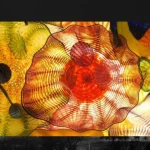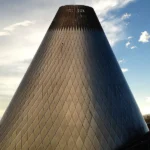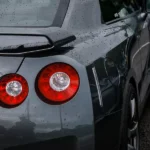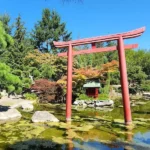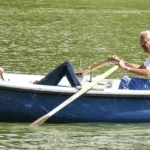Nestled amidst the verdant landscapes of the Pacific Northwest and a mere half-hour drive from the urban hustle of Tacoma lies a sanctuary of serenity – the Pacific Bonsai Museum. This hidden jewel, tucked away in Federal Way, contrasts the cacophony of city life, offering a retreat that beckons with the promise of peace and stillness. The museum is not simply a collection of plants but an oasis of tranquility where nature, art, and culture converge.
As you approach the Pacific Bonsai Museum, the frenetic energy of urban existence fades into the background. The surrounding environment transitions into a tableau of towering conifers and lush, native undergrowth – a slice of wooded heaven that seems a world apart from the nearby city. The museum is delicately placed within this natural canopy, offering a respite that slows the passage of time and allows for a profound reconnection with the earth's quieter rhythms.
Upon entering the Pacific Bonsai Museum, visitors are greeted by the gentle interplay of light and shadow as sunbeams dance through the tree-lined surroundings, creating a living mosaic on the ground. The air is alive with the subtle whispers of the forest, the chirping of birds, and the rustle of leaves. This harmonious symphony captures the essence of the Pacific Northwest’s biodiversity. This harmony with nature forms the perfect backdrop for the museum’s living exhibits.
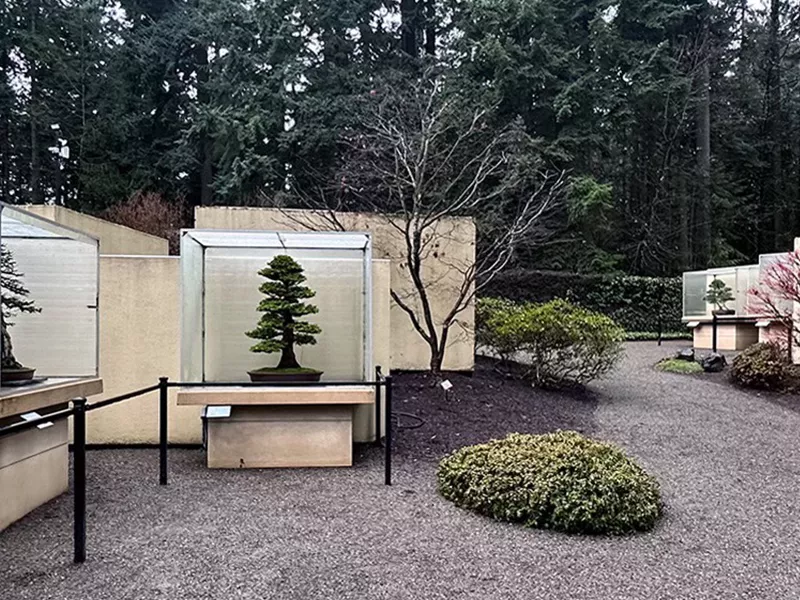
The museum’s layout is a thoughtful homage to its surroundings, with meandering paths that guide visitors through the collection. Each turn reveals a vista of miniature landscapes, expertly trimmed and cultivated to evoke the beauty of their full-sized counterparts. It's a space that encourages leisurely exploration and introspection, where the outside world's concerns diminish to make room for quiet admiration.
In this sanctuary, the Pacific Bonsai Museum offers a soulful encounter with the ancient art of bonsai. The meticulously pruned miniature trees, with their gnarled trunks and delicate foliage, stand as symbols of patience and perseverance, reflecting the meticulous care imbued by their creators. Each bonsai, a blend of horticultural skill and artistic vision, is presented as an exhibit and a living testament to the fusion of human ingenuity and nature's splendor.
The museum's proximity to Tacoma makes it an accessible escape, a swift departure from urbanity to a setting that rejuvenates the spirit. It serves as a haven for contemplation, where the hustle of city life is replaced by the mindful observation of nature's minutiae. The Pacific Bonsai Museum is a space to meander, learn, and discover a profound sense of calm. Here, amidst the whispering pines and curated beauty, you are invited to pause, breathe, and revel in the tranquil atmosphere that this unique museum so generously offers.
As you step onto the grounds of the Pacific Bonsai Museum, a living gallery unfolds before you, where each bonsai tree serves as a singular masterpiece, epitomizing both the harmony of nature and the touch of human artistry. The museum is renowned for its tranquil setting and unparalleled collection encompassing various miniature trees, each telling a silent story of cultural heritage and natural beauty.
Imagine being surrounded by the delicate tracery of Japanese maples, their leaves ranging from the palest of greens to the deepest reds, intricately shaped and forming a lacework against the sky. Nearby, the ruggedness of a centuries-old Sierra juniper commands attention, its gnarled trunk bearing the marks of resilience and the passage of time. This enchanting world awaits at the Pacific Bonsai Museum, where the elegance of living art is celebrated in its myriad forms.
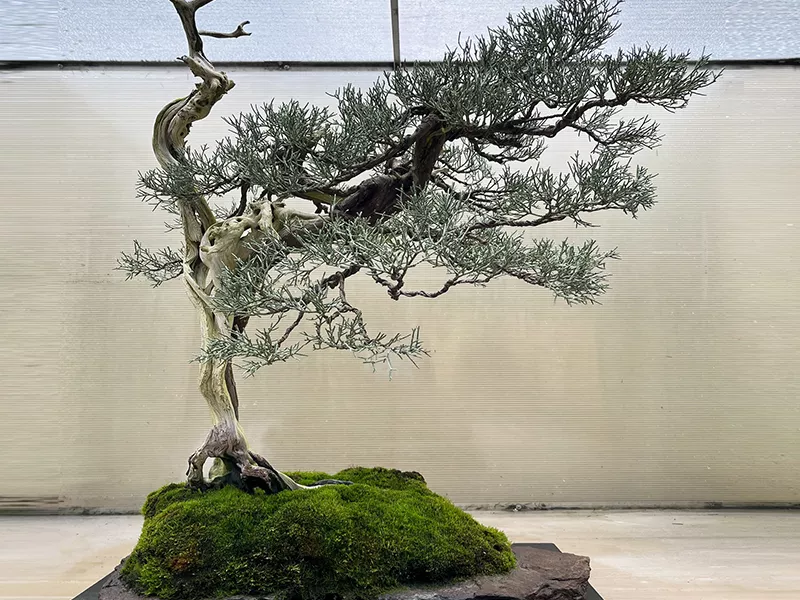
The diversity of the museum's collection is truly remarkable, comprising over 150 individual bonsai trees, each carefully selected for its aesthetic appeal and historical significance. The collection is not static but dynamic, rotating throughout the seasons to ensure that each visit offers a new perspective and a renewed sense of wonder. It is a place where the confluence of bonsai from Japan sits alongside specimens from Korea, Taiwan, and the broader reaches of Asia, as well as North America, weaving a global tapestry of bonsai traditions.
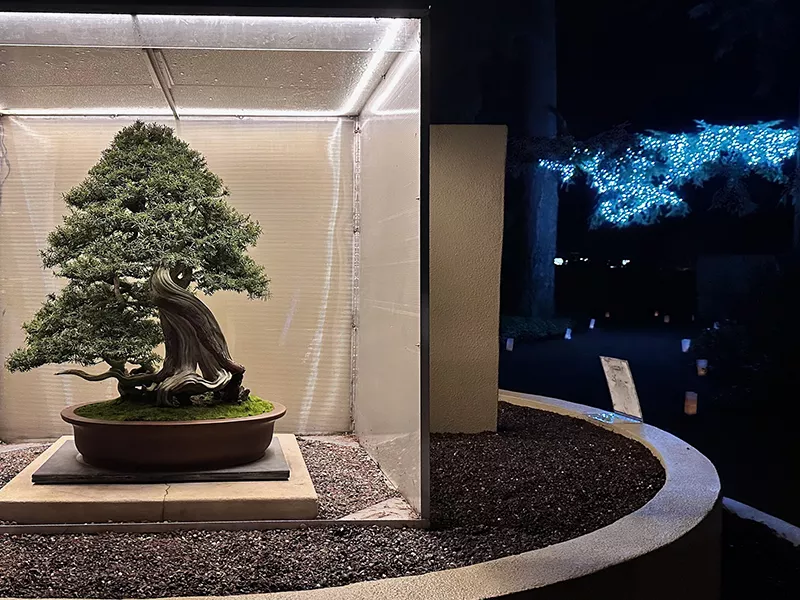
What sets the museum apart is how it presents its collection, which is not merely displayed but rather unveiled in a manner that invites close examination and deep appreciation. Each tree, whether a tiny shohin bonsai or a stately formal upright, is set against a backdrop of natural beauty that enhances its form and elevates the viewing experience. The exhibits are strategically placed along the land's natural contours, allowing the trees to interact with the light and elements, reflecting the outdoor environments from which they derive.
This array of bonsai at the Pacific Bonsai Museum offers a glimpse into the depth and breadth of bonsai art. The museum displays an astonishing spectrum of creativity, from the classical styles that adhere to strict traditional guidelines to more innovative and contemporary designs that challenge conventional boundaries. It is a place where ancient pines, with their weathered bark and dense foliage, sit perfectly with avant-garde creations, showcasing living sculptures and narratives.
Here, you will encounter the coastal redwood bonsai, an emblem of the towering giants found along the Pacific shoreline, now gracefully miniaturized but still exuding a sense of majestic permanence. With its curved branches and deciduous charm, the Chinese elm bonsai offers a different grace and fluid motion aesthetic. The museum's collection celebrates such contrasts, a dialogue between species and styles that enriches visual discourse.
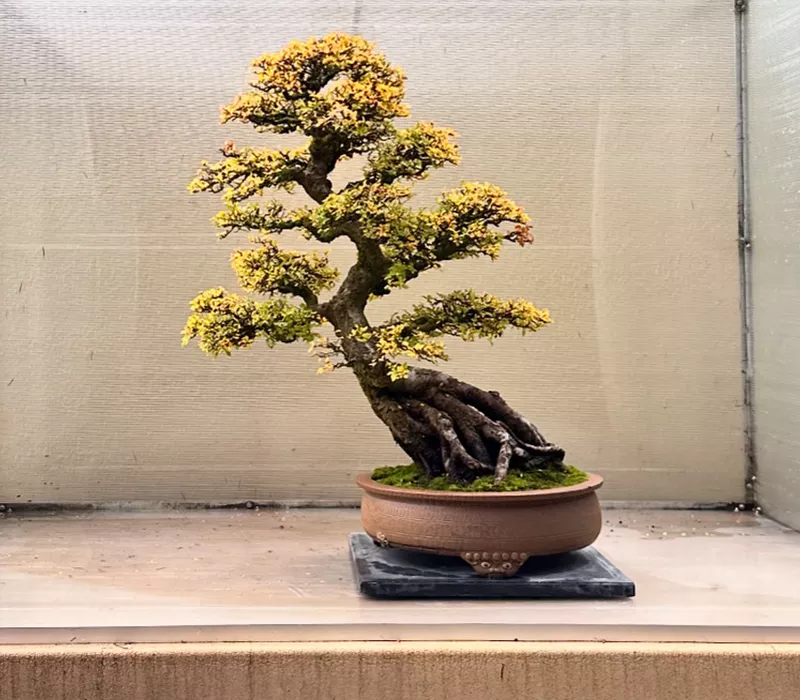
Each tree in the collection is meticulously cared for by skilled bonsai artists who understand the subtle interplay between growth and containment, wildness and refinement. The result is a bonsai that captures the essence of a fully mature tree in nature but in a form that invites contemplation and closer communion. The Pacific Bonsai Museum's exhibits are not only a testament to the expertise of the bonsai masters but also to the patience and time it takes to shape these living works of art.
Indeed, part of the museum's allure is its ability to showcase the individual character of each bonsai. No two trees are the same; each carries its history and character, shaped by the hands of bonsai artists across generations. From the dignified presence of an ancient cedar to the whimsical charm of a flowering cherry bonsai, the museum offers a visual feast for the eyes and a balm for the soul.
As the seasons change, so does the face of the bonsai collection. The spring brings forth fresh blossoms and tender new leaves, while autumn cloaks the bonsai in a fiery palette of colors. Even in the depth of winter, there is beauty in the stark silhouettes and the persistence of evergreens. This ever-changing display reflects the museum's dedication to presenting bonsai in their natural state, an evolving beauty that changes with time and season.
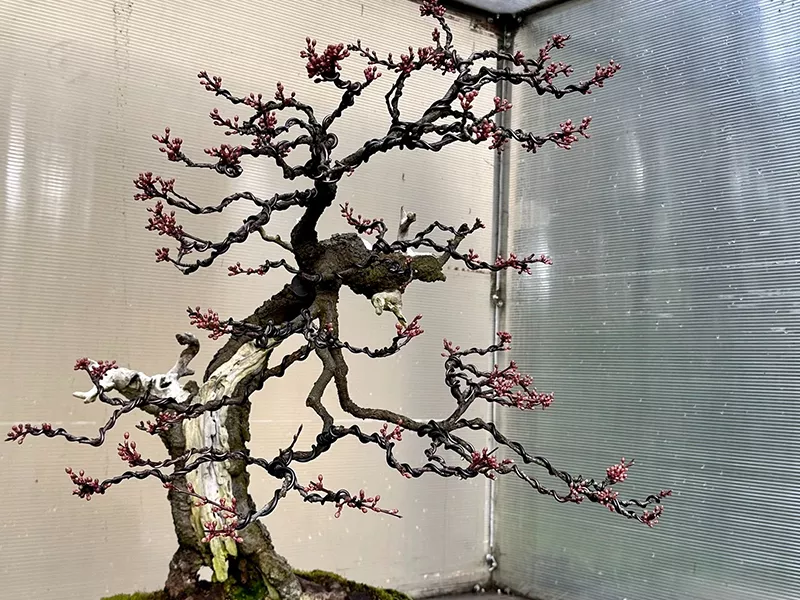
The Pacific Bonsai Museum stands as a beacon for all who seek to experience the profound beauty of bonsai. It is a place where the silent poetry of these miniature trees resonates with the viewer, where the elegance and diversity of the museum's collection serve not just as a visual spectacle but as an enduring source of inspiration and tranquility.
The Pacific Bonsai Museum stands as a beacon of knowledge for anyone intrigued by the quiet power of bonsai. Here, the complex world of these miniature trees unravels through a plethora of educational opportunities designed to ignite the curiosity of novices and expand the skills of practiced enthusiasts alike.
Within the tranquil precincts of the museum, education is an immersive and ongoing journey. The museum curates diverse workshops and hands-on classes where participants can learn everything from bonsai's primary care and maintenance to the advanced techniques used in styling and shaping. These workshops are meticulously planned to accommodate various skill levels, ensuring each participant finds the session enlightening and enriching.
For the uninitiated, the museum offers introductory classes that lay a solid foundation in the art of bonsai. Here, visitors can familiarize themselves with the philosophical underpinnings that have shaped bonsai culture over the centuries. These initial courses cover fundamental aspects such as selecting suitable plant material, understanding potting and repotting practices, and the importance of soil and fertilization for healthy bonsai cultivation.
For those seeking a deeper dive into the art form, intermediate and advanced courses are available, delving into sophisticated styling techniques, wiring methods, and the intricacies of bonsai design principles. These sessions are often led by seasoned bonsai artists and experts who share their technical knowledge and insights into the creative and aesthetic decisions that elevate a bonsai tree from a mere plant to a living sculpture.
In addition to the hands-on workshops, the Pacific Bonsai Museum connects with audiences through a series of enlightening lectures and demonstrations. These sessions are often themed around specific aspects of bonsai art or focused on the cultural history of bonsai in various parts of the world. Such lectures serve as a platform for cultural exchange, where the diverse origins of bonsai are celebrated and respected.
One of the most engaging educational features of the museum is its docent-led tours. The museum's well-informed docents take visitors on guided tours of the exhibits, providing insights into the history of each tree, the unique characteristics that define its style, and the technical aspects involved in its care. This direct interaction with knowledgeable guides enhances the visitor experience and fosters a deeper appreciation for the art form.
The museum is also a trailblazer in adapting to the digital era by offering virtual field trips and online resources, making bonsai education accessible far beyond its physical location. These digital offerings have opened the doors for global participation and have enriched the museum's ability to reach a wider audience. Virtual visitors can enjoy digital galleries, educational videos, and interactive sessions, thus extending the museum's reach to those who cannot travel to the site.
Furthermore, the Pacific Bonsai Museum demonstrates its dedication to nurturing future generations of bonsai artists and enthusiasts through its youth engagement programs. Tailored to inspire young minds, these programs often incorporate hands-on activities that instill an appreciation for nature and creativity. The museum plants the seeds for a lifelong passion for this art form by introducing children to the patience and care required for bonsai cultivation.
The museum's role as an educational institution is further solidified through its collaborations with local schools and community groups. It frequently hosts field trips and educational outings, providing an enriching experience that complements traditional classroom learning. These interactions allow students to connect with the living world and understand bonsai's cultural importance.
One of the most captivating times at the Pacific Bonsai Museum is when it hosts ‘A Bonsai Solstice.' This enchanting event invites the public to witness the beauty of bonsai amidst the ethereal glow of lanterns, fostering a magical atmosphere that resonates with the profound stillness of winter solstice. This annual event is also an educational celebration, providing attendees with an understanding of the seasonal changes in bonsai and the symbolism of renewal and quietude embodied by the solstice.
At the Pacific Bonsai Museum, visitors are treated to an array of events that elevate the experience of bonsai viewing and cultivate a sense of community. The vibrant event calendar reflects the museum’s dedication to bringing people together by appreciating this ancient art form. Each event is designed to provide a deeper understanding of bonsai while offering a communal space for like-minded individuals to share their passion.
Bonsai Fest! – A Springtime Celebration
A highlight on the museum's event calendar is the eagerly anticipated Bonsai Fest!, a springtime celebration that coincides with Mother's Day weekend. During Bonsai Fest!, the museum comes alive with the bustling energy of visitors eager to experience the tranquility of bonsai in full bloom. Workshops and demonstrations allow guests to witness firsthand the meticulous care and skill of maintaining these living sculptures. In addition to the educational opportunities, the festival often includes family-friendly activities and craft booths, making it an ideal outing for bonsai enthusiasts of all ages.
A Bonsai Solstice – Embracing the Mystique of Winter
The annual A Bonsai Solstice event is one of the museum's most unique offerings. This winter gathering takes advantage of the longest night of the year to showcase bonsai in a new light. Visitors are welcomed with lanterns and candlelit pathways that lead them through the ethereal display of bonsai trees under the night sky. The experience is both mystical and meditative, as the serenity of the solstice night fosters a deep connection with the stillness and beauty of nature. The event often includes warm beverages and music, adding warmth and ambiance to the chilly evening air.
Exhibit Openings and Artist Talks
The museum frequently hosts exhibit openings, where visitors can be among the first to view new installations. These events are often accompanied by artist talks, which offer insights into the creative process and the stories behind the bonsai on display. Engaging directly with the artists allows attendees to appreciate better the bonsai art form and the dedication required to produce such breathtaking works.
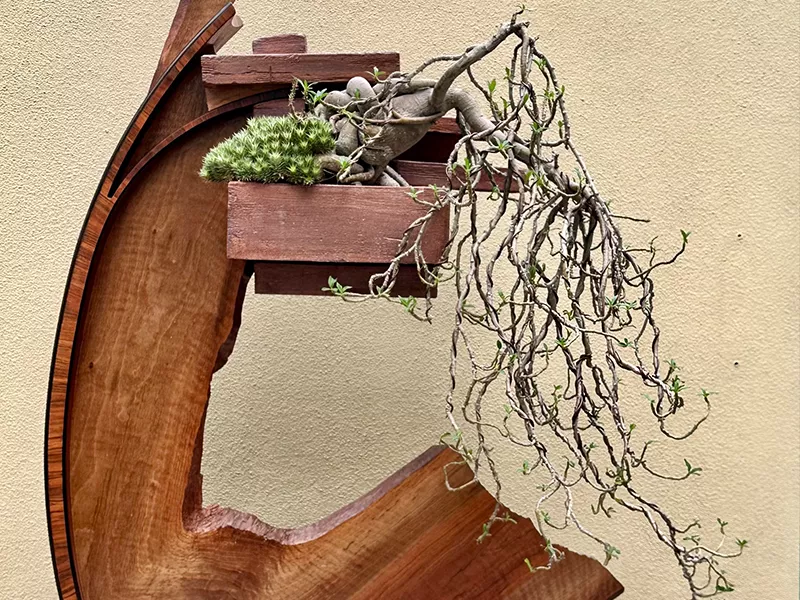
Hands-On Workshops and Master Classes
For those who seek to do more than admire bonsai from afar, the Pacific Bonsai Museum offers hands-on workshops and master classes. These sessions vary in skill level—from introductory workshops for beginners to advanced classes for seasoned practitioners. Participants are allowed to work on their bonsai under the guidance of experienced instructors, providing a tangible way to engage with the art form and learn new techniques.
Docent Tours and Themed Exhibits
Visitors can join docent-led tours that provide fascinating details about each tree's history, style, and maintenance for a more structured look at the bonsai collection. The museum also curates themed exhibits that change periodically, allowing for exploring different aspects of bonsai or highlighting particular species or styles. These themed exhibits offer an additional interaction layer, as specialized tours and informational signage often accompany them.
Community Days and Cultural Celebrations
The museum recognizes the importance of community and cultural heritage by hosting various community days and cultural celebrations. These events are tailored to celebrate the origins and influences of bonsai art, from its roots in Asia to its contemporary interpretations. Cultural celebrations can include music, dance, and traditional ceremonies, providing a rich, immersive experience that extends beyond the visual beauty of the bonsai themselves.
Photography Nights and Art Sessions
Photography nights invite visitors to capture the unique beauty of bonsai under special lighting conditions, offering amateur and professional photographers the chance to photograph the trees in a new context. Additionally, art sessions are organized for those who want to sketch, paint, or even write amidst the tranquil backdrop of the museum’s bonsai collection.
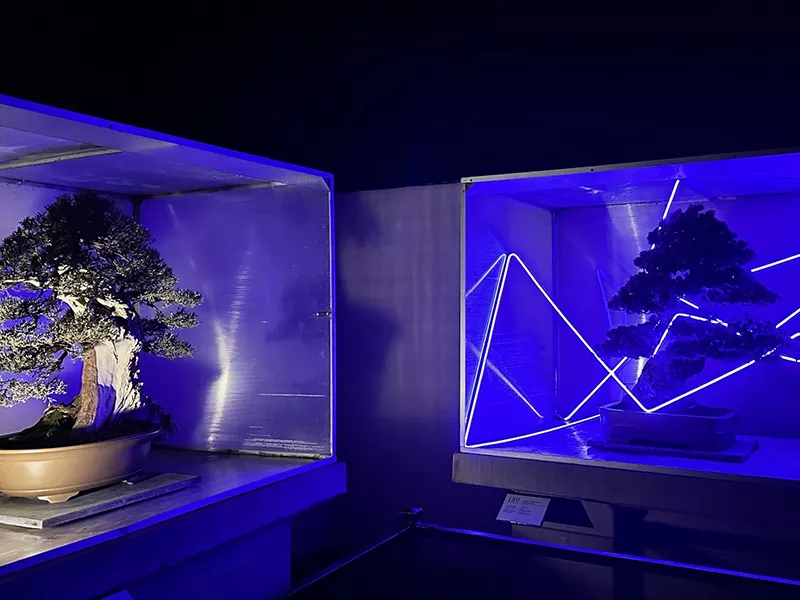
Each event on the museum's calendar invites participation and celebration, turning the quiet observation of bonsai into a lively and shared experience. Through these events, the Pacific Bonsai Museum showcases its exquisite collection and strengthens the bonds of the Bonsai community, ensuring the art form's legacy continues to thrive and inspire.
Imagine wandering along meandering pathways with the majestic Mount Rainier in the distance, admiring bonsai that are horticultural wonders and artistic masterpieces. Each bonsai at the museum is displayed against the natural backdrop of the Pacific Northwest, emphasizing its beauty and the artistic skill required to create such pieces. The outdoor setting enhances the experience, allowing visitors to appreciate the interaction between art and nature.
Walking through the Pacific Bonsai Museum grounds is an immersive experience that transports you to the heart of nature's gallery, where the bonsai are the revered masterpieces. The museum is thoughtfully designed so that you encounter a new living sculpture with its personality and story with each step. The collection's international variety serves as a dialogue between cultures, unified by the common language of bonsai.
As you tread lightly on the soft moss-lined walkways, the crisp air carries a symphony of natural sounds—the rustling of leaves, the soft whispering of the wind, and the occasional chirp of a bird perched in the surrounding Douglas firs. This soundtrack of nature, interwoven with the visual splendor of meticulously groomed bonsai, creates a sensory richness that can only be fully appreciated in the present moment.
The bonsai are set at eye level, inviting a close and personal interaction. Some centuries in the making, these miniature landscapes seem to encapsulate entire ecosystems within their dwarfed silhouettes. It's an encounter that commands a moment of pause, an opportunity to reflect on the intersecting journeys of humankind and the natural world. Each specimen celebrates life, perseverance, and transformation—a testament to the bonsai caretaker's craft and nature's creative force.
As seasons change, so too does the museum's living display. Visit in the blush of spring, and you'll see bonsai bursting with blooms, their branches a canvas of soft pinks and vibrant greens. Return in the summer heat to witness the deepening shades of foliage, a sunlit amber and jade tapestry. Autumn cloaks the bonsai in a fiery array of reds and oranges, while winter brings a hushed reverence, with trees cloaked in delicate frost, their barren branches casting intricate shadows against the snow.
Throughout the year, the unique choreography of light plays across the bonsai's twisted forms, with the shifting sun casting an ever-changing palette onto these natural sculptures. Dawn's early light bathes the trees in a gentle glow, while the golden hour of dusk sets the garden aglow, the bonsai silhouettes becoming dramatic figures against the canvas of twilight.
Special exhibitions are strategically placed to unveil themselves like secrets as you meander, ensuring that each visit holds a discovery, a new perspective. Whether it’s a bonsai echoing the ruggedness of the nearby Cascade Range or one that whispers of tranquil Japanese gardens, the collection speaks to the soul of both the untamed and the cultivated.
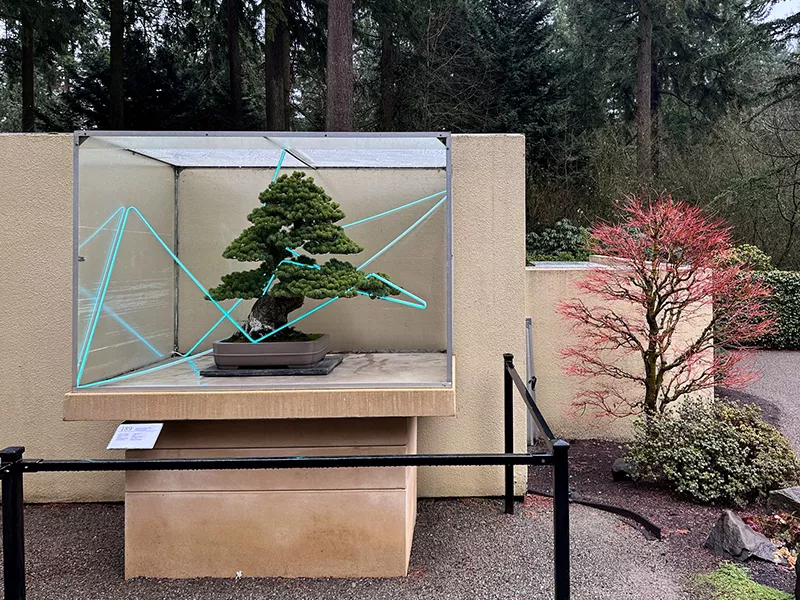
A profound sense of peace envelops you as you make your way through the museum, a serenity that arises from being so intimately engaged with these quiet sentinels of time. Each bonsai tells a story of resilience and adaptation through its silent stance, inviting you to contemplate your place within the natural world.
The Pacific Bonsai Museum is not merely a collection of trees; it is a living, breathing encounter with art and the elements, an interaction long after your stroll ends. The museum's grounds are a sanctuary where artistry and horticulture intersect, offering visitors a chance to journey through nature's most exquisite expressions.
The Pacific Bonsai Museum fulfills a profound mission, acting as a bridge between humanity and the environment through the delicate and mindful practice of bonsai. The time-honored tradition of cultivating bonsai is not merely about stunting trees to fit into pots; it's about creating a harmonious miniature landscape that mirrors the vastness of nature within a confined space. Bonsai is, in essence, a representation of nature's grandeur, a microcosm where each element is tended with respect and thoughtfulness. In nurturing these trees, one learns the rhythms and nuances of the natural world, fostering a relationship built on care and understanding.
At the heart of the museum's mission is the belief that in today's fast-paced world, where nature is often sidelined, there is a pressing need to reconnect with the earth. This is achieved by immersing visitors in the art of bonsai, a conversation with nature at its core. Each visitor who stands before a bonsai engages in a silent dialogue, asking them to consider the tree's aesthetic beauty, complex ecological processes, and cultural significance.
The Pacific Bonsai Museum carefully curates this experience by presenting each bonsai within an environment that highlights its unique story. The designs and arrangements are thought out to emphasize the tree's relationship with its environment: a pine tree, with its rugged form shaped by the wind, might evoke the feeling of a solitary tree perched atop a mountain, while a maple, with its cascading branches laden with fiery autumn leaves, can transport the onlooker to a serene Japanese garden in the heart of fall.
Through the stewardship and display of these living sculptures, the museum emphasizes that humans are not separate from nature but part of it. As visitors observe the detailed care put into each bonsai, they witness the result of human hands working in concert with natural growth. This is not a dominion over nature but a partnership with it—a lesson that extends beyond the museum's boundaries. The hope is that the patience and contemplation required in bonsai care will inspire visitors to adopt a more mindful approach to their interactions with the environment.
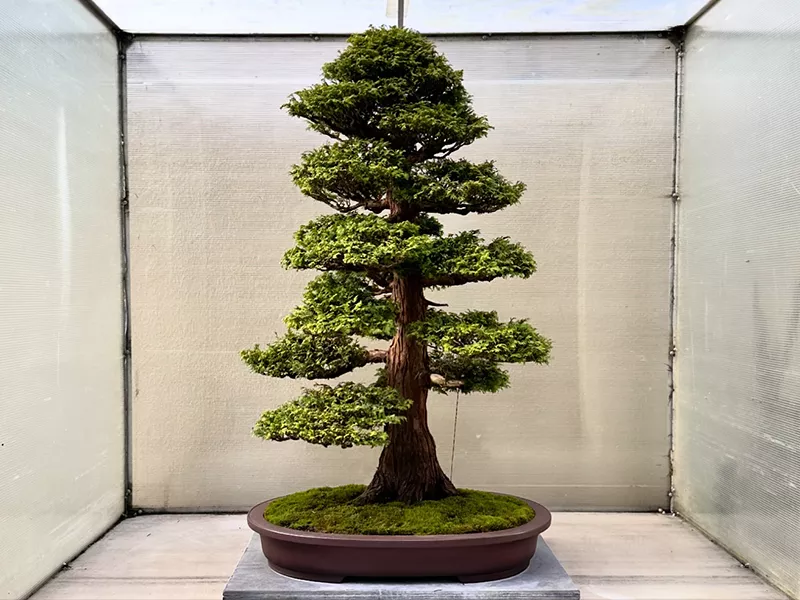
The museum's role in cultivating this connection is multifaceted. It serves as a conservatory, preserving species and techniques that might otherwise be lost. It acts as an educator, offering classes and resources for those eager to learn about the art of bonsai. And, perhaps most importantly, it functions as a space for reflection, where the time spent with these trees can lead to personal insights and a greater appreciation for the subtle yet profound ways in which life is interconnected.
Furthermore, the museum's dedication to presenting bonsai from across the globe highlights the universal nature of this connection. Featuring trees and styles from different countries and cultures demonstrates that human engagement with nature transcends boundaries and is a common thread uniting various peoples and traditions.
In this way, the Pacific Bonsai Museum's mission transcends the physical cultivation of trees. It plants seeds of thought, growth, and connection in the hearts of its visitors, encouraging a bond with nature rooted in care, respect, and an understanding of life's intricate balance. It is a mission that not only preserves the beauty and artistry of bonsai but also nurtures the human spirit, reminding us of our place within the broader ecosystem.
At the Pacific Bonsai Museum, artistry weaves itself into the very fabric of the experience. With every step taken along its tranquil pathways, the visitor becomes an active participant in a gallery alive with natural wonder. Here, each bonsai tree stands as a testament to the dance between discipline and creativity, an exquisite synthesis of horticultural precision and raw, untouched beauty that beckons the eye of the photographer and the soul of the artist.
Amidst this verdant setting, the aesthetic allure is undeniable. The museum offers a compelling canvas where light filters through delicate foliage, casting intricate shadows that shift with the passing sun. The subtle interplay of light and dark accentuates the textures of gnarled trunks and soft mosses, inviting a deep exploration of form and contrast. The quiet contemplation required to appreciate these living sculptures truly is mirrored in the mindful observation needed to capture their essence through a camera's lens or brush's stroke.

Whether a seasoned professional or an inspired amateur, the photographer will be spoilt for choice. The museum’s natural lighting, provided generously by the open sky, creates dynamic backgrounds that change with the weather and time of day. In this open-air studio, the bonsai reveals itself as a subject to be captured and as a collaborator in the artistic process. Each photograph becomes a unique conversation between the artist and the tree, a moment frozen in time that reflects both the bonsai's history and the photographer's vision.
Moreover, the art lover, whether wielding a pencil or palette, will discover in each bonsai a silent guide, leading them through lessons in composition and perspective. The museum’s collection offers diverse interpretations of this ancient art, from the minimalist elegance of a lone tree to the complex narratives of group plantings. Artists can draw inspiration from the visual harmony of the bonsai, which encapsulates the balance of space and volume, of emptiness and substance – elements that lie at the core of visual arts.
The immersive environment of the Pacific Bonsai Museum encourages a synergy of artistic disciplines. Sculpture blends with painting, as three-dimensional forms seem painted by nature's hand. In this setting, the boundaries between art forms blur, allowing visitors to capture and create across mediums. The serenity of the surroundings fosters creativity, and the open invitation to record and interpret the visual feast before them has made the museum a pilgrimage site for those seeking to rekindle their creative fire.
One could imagine an artist seated on a bench, sketchpad resting on their lap, eyes flitting from the paper to the bonsai and back again. They are capturing not just the physical appearance of the tree but also its spirit—the invisible energy that the bonsai exudes. With each pencil stroke, the artist honors the decades, sometimes centuries, of careful cultivation that have shaped the tree before them. This depth of story, the living history, grants the museum’s bonsai an unparalleled depth as subjects of art.
The Pacific Bonsai Museum transcends its role as a mere venue for display; it is a dynamic space where nature, art, and humanity intersect. Creatives will find in this museum a muse that stands still yet speaks volumes, offering endless inspiration through its silent majesty. Here, the act of creation becomes a meditative practice, and the resulting art—a fusion of the artist’s inner vision and the outer beauty of bonsai—becomes a shared gift to the world.
Visitors are reminded that while the bonsai are not to be touched, the experience of viewing them can deeply touch the beholder. The Pacific Bonsai Museum so gracefully facilitates this profound connection—an enduring bond between the observer, the artist, and the natural world. This is the muse in its purest form: a living gallery where art is not just seen but deeply felt, a place where the beauty of bonsai can be captured through a lens, interpreted on canvas, or cherished in the heart.
Ensuring all guests have the information they need to plan a seamless visit is vital to any attraction, and the Pacific Bonsai Museum is no exception. If you're plotting your journey to this sanctuary of nature and art, here's what you need to know.
Practical Visiting Information: Admission
Welcoming a diverse audience, the Pacific Bonsai Museum operates on a ‘pay what you wish' admission model. While a suggested donation of $12 per adult aids in the upkeep of the museum and supports its ongoing educational programs, visitors are encouraged to contribute whatever amount they feel comfortable with. This approach not only fosters a spirit of inclusivity but also ensures that the joy and education the museum provides are accessible to all, regardless of economic circumstance.
Hours of Operation
The Pacific Bonsai Museum is mindful of its patrons' varying schedules and is open six days a week. The museum welcomes visitors as follows:
Tuesday to Friday: 10:00 AM to 4:00 PM
Weekends: 10:00 AM to 4:00 PM
The extended weekend hours recognize the community's recreational needs, offering ample time for guests to peruse the collection without feeling rushed. It’s worth noting that the museum is closed on Mondays to allow the bonsai the rest and maintenance they deserve, ensuring that each tree remains a vision of perfection for visitors.
Commitment to Accessibility
Accessibility is paramount at the Pacific Bonsai Museum, as it strives to ensure that all visitors can enjoy the bonsai displays regardless of physical ability or other considerations. The museum's grounds are largely wheelchair-accessible, with paths designed to be navigable for those with mobility aids. Furthermore, service animals are welcomed throughout the museum, allowing visitors who require assistance to participate fully in the museum experience.
For visitors needing visual or hearing assistance, the Pacific Bonsai Museum is actively working towards providing resources to enhance their experience. Staff and volunteers are always at hand, ready to aid guests in any way possible, ensuring everyone can connect with the art and nature on display.
Getting There
Located within the verdant enclave of Federal Way, the museum is easily accessible from Tacoma. It's a straightforward drive for those with transportation, but the museum is also reachable via public transport, underscoring its commitment to being accessible to a broad audience.
By Car: The museum is just a short drive from I-5, and ample parking is available for museum patrons.
By Public Transport: Bus routes and nearby transit centers facilitate visits for those who prefer not to drive or are visiting from out of town.
Contact Details and Inquiries
For more detailed directions, group tour bookings, or any other queries, visitors can contact the museum directly:
Phone: (253) 353-7345
Email: [email protected]
Address: 2515 S 336th Street, Federal Way, WA 98001
The dedicated staff are always eager to assist, whether by providing more accessibility information, helping plan a group visit, or offering insight into the current exhibitions.
A Reminder
Finally, while the museum is an interactive experience, visitors are reminded that touching the bonsai is not permitted. These living sculptures are delicate and require careful handling by trained staff only. By respecting this rule, guests ensure that the bonsai remains unharmed for everyone's enjoyment.
With all this practical information, your visit to the Pacific Bonsai Museum is set to be an enchanting and smooth experience. The museum awaits you with open arms, ready to provide a tranquil retreat where art, nature, and the human spirit converge.
At the heart of the Pacific Bonsai Museum’s ethos is the belief that every visitor isn’t just a spectator but can actively participate in the museum’s thriving community. The institution displays an array of exquisite bonsai trees and invites individuals to engage with the living art form and its preservation through volunteerism and community support. This involvement is pivotal for the museum's sustained operation and for nurturing a communal spirit and a shared passion for bonsai culture.
Volunteer at the Pacific Bonsai Museum
For those drawn to the museum's beauty and tranquility and wish to dedicate more time, becoming a volunteer offers a rewarding avenue to do so. Volunteers are integral to the museum's ability to carry out its mission and provide a high-quality experience for all visitors.
Roles for volunteers are diverse and cater to various interests and skills. Do you possess a flair for education and communication? Consider joining as a docent, where you can lead tours and share the fascinating stories behind each bonsai. For those with a knack for gardening and horticulture, there is the opportunity to assist in the meticulous care and maintenance of the bonsai collection – a truly hands-on experience that connects you directly with the art form.
Moreover, the museum welcomes help during special events such as Bonsai Fest! and A Bonsai Solstice. These events are bustling with activity, and volunteers can take on roles in guest services, event set-up and break-down, and various interactive stations that offer fun for the whole family.
Volunteering at the museum contributes to preserving and celebrating bonsai art and provides a unique personal development opportunity. Volunteers learn new skills, meet like-minded people, and become part of a supportive and passionate community.
Join the Museum's Community-Oriented Initiatives
The Pacific Bonsai Museum fervently believes in giving back to the community and nurturing relationships beyond its grounds. Through community-oriented initiatives, the museum has become a hub for cultural exchange and education.
One such initiative is the museum's participation in programs to foster an appreciation for bonsai among youth. By supporting these programs through volunteering or donations, you help the museum reach out to schools and offer children a chance to learn about this fascinating form of living art.
Community members can also support the museum by joining its membership program. Members enjoy various benefits, including unique event invitations, discounts on workshops and in the museum store, and the satisfaction of knowing they are aiding the museum’s growth and accessibility to all.
Additionally, the museum has an “adopt-a-bonsai” program, a perfect opportunity for individuals and businesses to care directly for the museum’s collection. Your support ensures these bonsai trees continue to thrive and inspire for generations to come.
The museum also appreciates support in the form of skills-based volunteering. Whether you have marketing, fundraising, or event planning expertise, your skills can significantly contribute to the museum's initiatives and outreach programs. This collaborative effort enhances the museum’s services and strengthens the community’s involvement in cultural preservation.
Connect on a Deeper Level
Engaging with the Pacific Bonsai Museum through volunteering and community initiatives offers a deeper connection to the museum and its mission. As volunteers and supporters, individuals can witness the impact of their efforts, from the meticulous care that keeps the bonsai flourishing to the joy and wonder they bring visitors of all ages.
By fostering this more profound engagement, the Pacific Bonsai Museum transcends being merely an attraction. It becomes a living, breathing entity that reflects its community's care, dedication, and passion. Here, amidst the whispers of the bonsai, every volunteer and supporter becomes part of a larger narrative that speaks of stewardship, cultural exchange, and the shared love of an ancient art form.
A Call to Action
Consider this a heartfelt invitation to take your experience with the Pacific Bonsai Museum to the next level. In volunteering your time, skills, and support, you become part of a dedicated team working to maintain this sanctuary of peace and beauty and help ensure that it remains a source of inspiration and learning for future visitors. The museum calls on you to join hands with its community of bonsai admirers and advocates, actively fostering a love for these miniature marvels in the heart of Tacoma, WA.
The Pacific Bonsai Museum, nestled in the lush landscape of Tacoma, WA, is a destination where tranquility and beauty merge to form an unforgettable experience. It is a place that transcends the ordinary, a sanctuary where nature, culture, and art intersect, providing visitors with a unique opportunity to witness the living art of bonsai in all its glory.
A visit to the museum is an enriching journey through a forest of miniature trees, each with its unique form, style, and story. These bonsai trees, some of which have been tenderly cared for over the decades, represent a legacy of patience and dedication. As visitors stroll through the museum’s outdoor exhibit space, they are invited to contemplate the delicate balance of nature and the meticulous human touch that shapes it.
The Pacific Bonsai Museum embodies cultural diversity, with bonsai from countries like Japan, China, Korea, Taiwan, and beyond thriving in harmonious display. It is a testament to the universal appeal and shared passion for bonsai art that transcends geographical boundaries. The museum showcases these living sculptures and serves as a conduit for cultural stories and traditions, allowing guests to embark on a global adventure without ever leaving the grounds.
Educational programs at the museum offer an immersive dive into the bonsai world, providing both novices and enthusiasts with a deeper understanding of the art form's intricacies. As the seasons change, so does the museum's landscape, offering a dynamic and evolving experience with each visit. The art of bonsai comes alive, illuminated by the changing light, making each moment at the museum unique and each view a discovery.
The museum’s event calendar is punctuated with activities that engage and inspire. Special events such as Bonsai Fest! and A Bonsai Solstice are celebrations of the bonsai and gatherings that foster community spirit and appreciation for the art. These events provide an atmosphere of festivity and learning, where visitors can engage with experts, participate in workshops, and enjoy the company of fellow bonsai enthusiasts.
For art lovers and photographers, the museum provides a visual feast. The play of light through the foliage, the textures of the bark, and the overall elegance of the compositions offer endless inspiration. The interplay of natural beauty and artistic expression found here is unparalleled, turning every angle into a picture-perfect frame, every moment an opportunity to capture the quiet majesty of these horticultural wonders.
Accessibility and inclusivity are at the forefront of the museum's ethos. The suggested donation admission policy ensures everyone can enjoy this cultural treasure, regardless of financial means. The museum strives to provide a welcoming environment where all visitors can revel in the tranquility and splendor of the bonsai collection, gaining insight into a unique aspect of our natural and cultural heritage.
For those who feel a special connection to the museum and its purpose, the path to deeper involvement is open and inviting. The museum offers many volunteer opportunities, allowing individuals to contribute to preserving bonsai art and becoming ambassadors of this ancient practice. Volunteers become the heart and soul of the museum, their efforts echoing the careful nurturing required by the bonsai.
In essence, the Pacific Bonsai Museum stands as a beacon of peace, beauty, and introspection. It provides a space where one can slow down, breathe deeply, and allow the sublime artistry of bonsai to wash over the senses. It is a place where the simplicity and complexity of nature are on full display, inviting visitors to forge a profound and personal connection with the miniature landscapes before them.
Whether seeking a meditative retreat, an educational excursion, or simply the joy of experiencing something truly unique, the Pacific Bonsai Museum in Tacoma, WA, is an essential destination. It promises an enriching experience that captivates the heart and nourishes the soul, leaving visitors with a lingering sense of wonder and a desire to return to its tranquil pathways time and time again. Here, amidst the gentle whisper of the pine and the stoic presence of bonsai centuries in the making, every guest will find a moment of serenity, a touch of inspiration, and a deeper appreciation for the delicate dance between humanity and the natural world.

Lifelong bacon junkie. Lifelong internet fanatic. Hipster-friendly travel aficionado. Twitter lover. Avid food buff. Incurable travel trailblazer.




